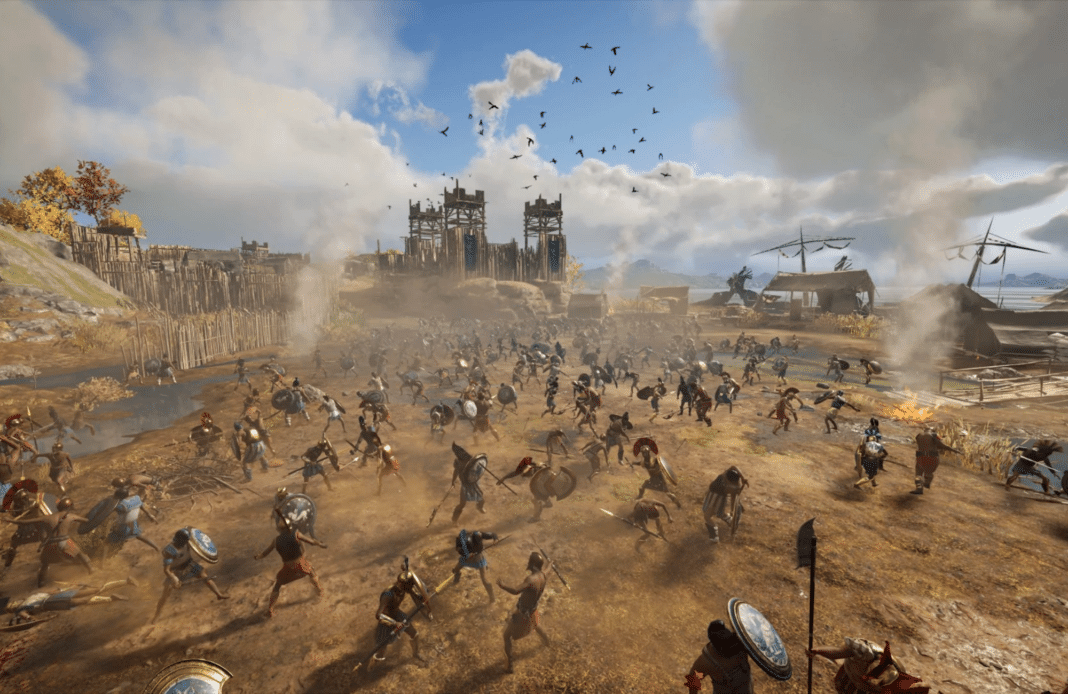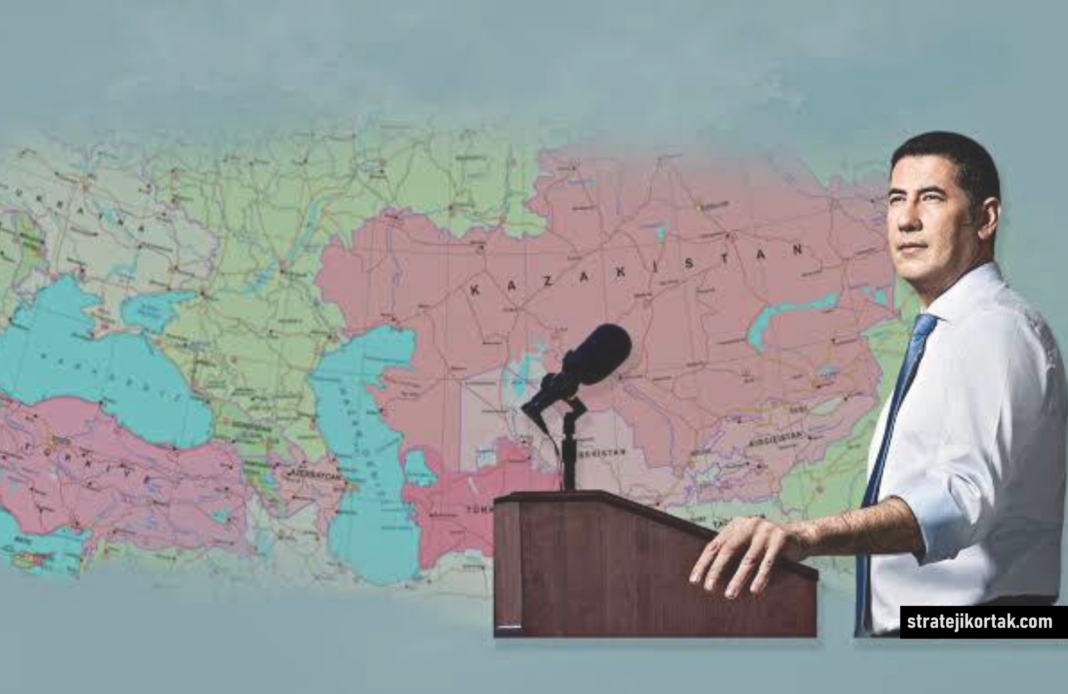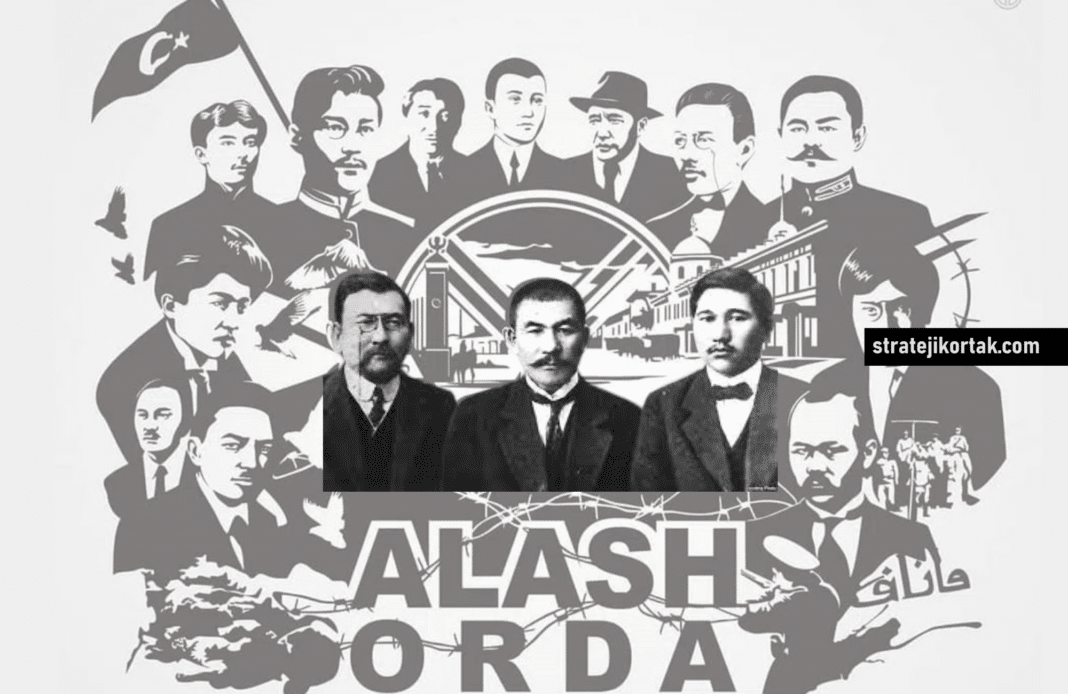Neoclassic Realist Interpretations: 16th Century Middle East Politics
General Thucydides from Athens believed that the Peloponnesian War has a distinct characteristic separated it from the other conflicts occurred before. In his book, Thucydides thought that the Athenian expansionism was derived from its oligarchic upper-class circles, that drive whole Greece into the war zone (Thucydides, 2009). Moreover, he proposed that the, conflict between Athens and Sparta led both city-states for search for more allies in order to create balance against each other, while doing that they also tried to reduce their enemies’ possible allies one by one as Athens did on the Corinth. Thucydides also pointed on certain different characteristics of both sides of the war. On the one hand, Spartans with their military-oriented oligarchy, creating a surplus extraction from the agricultural economy with certain level of conservatism, on the other hand, there was Athens, which has a limited democracy based on civil oligarchy consisted on sea trade economy and quite liberal compared to the Spartans, however, such an ideological differences can be evaluated in other perspectives, such as the Michael Mann did in his work, Origins of Social Power Vol. I, he pointed out that, Greek city-states mostly shared same ideological camp, conservatist/socialist weltenschaung (Thucydides, 2009) (Mann, 2013). Thucydides’ s analysis on the Peloponnesian War, during the 20th century, applied by the scholars as a new way of thinking in realist theory, which is neoclassical realism. Different from the other realist thoughts, classical realism and neorealism, neoclassical realism brings new element for the foreign policy analysis, domestic politics and their affects into the foreign policy. While doing that, theory itself did not refuse the systematic approach of the neorealist theory, or ignore the human nature derived from the classical realism. In this essay, I will try to show that, early 16th century politics can be analysed through the perspective of the neoclassical realism with some adjustments. Paper will start with the definition and analysis methods of the neoclassical realism and its strengths, then my adjustments into this perspective, later I will apply this perspective into the early 16th century, through analysis of the one major conflict as a case study for examination of internal dynamics. In conclusion I will show that, neoclassical realism can be used as a universal analysis method, not only restricted to the 20th century power politics. In this regard, rather than inspection of the whole theory, I will focus on the Jack Snyder’s book, Myths of Empire, a classic for the neoclassical realist tradition.
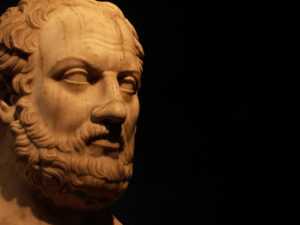
-
Neoclassical Realism and Adjustments
Neoclassical realism emerged due to four important limitations of the neorealist theory, first of all, they believed that the states do not always perceive systemic stimuli proposed by the neorealists. Jack Snyder’s book, Myths of Empire, one of the most influential books in the neoclassical realist theory, assumed that correctly, in the case of the Germany and the Imperial Japan, despite the huge anticipation from Britain and the Soviet Russia, why these states continued to pursue such expansionist policies? Answer was simple, they failed the perceive systemic stimuli, in other words, they confused their rivals’ power as paper tiger, due to their internal misinformation systems that brought their leaders a false opinion (Snyder, 1991). On the other hand, such limitations on the environment perception also fuelled by the ruling elites’ cognitive biases, in other words, ruling elites’ previous experiences and their beliefs on their status in power systems, led to policy fails or successes, according to the Jack Snyder (Snyder, 1991). Second important critique for the neorealist theory is the actors are not always responding with rational choices to the systemic actions, according to the Jack Snyder, this happens due to two reasons. First of all, as we mentioned previously, cognitive biases, actor’s previous shared experiences and their common background as well as their belief systems (Snyder, 1991). Such issues can be understand in the example of the Soviet Union, in different periods, based on the political actors who shape the foreign policies across the time, different perspectives led to different policy options, for example during the Khrushchev period, West seen as eternal enemy and aggressiveness perceived as a important leverage against the Western world, however, as seen in the period, Cuban Missile Crisis, US also capable for any retaliation against the Soviets, which eventually depopularize the Khrushchev’s policies towards Western Bloc (Snyder, 1991). Second important reason for such un-rational decisions derived from the coalition politics. Snyder showed that, states are not unitary actors which has one final decision against their environment. Contrary, state also contains different groups, elites, classes, which every one of them has different political perspective in the same stimuli (Snyder, 1991). For example, in the case of the policy towards Russia, during the Bismarck period, while agriculturalists demanded boycott and high-tariffs against the Russia in order to continue their profits from wheat, industrialists demanded free-trade with Russia, in order to develop their industrial sites and reach cheap raw material in order to compete against the British and American industries. Bismarck was able to consolidate two group’s demands in one pot, known as “Iron and Rye Marriage”, however, once the Bismarck exit from the coalition, both sides started to act for their own interests (Gerschenkron, 1966). German industrialists on the one hand pursued ambitious naval projects that threatened British Empire, on the other hand, agriculturalists pursued hostile actions against Russia, high-tariffs and boycott against the Russian wheat, that polarise the Russian Empire against the Wilhemine Germany. In addition, with the industrialists pressure against France with Alsace-Lorraine zone, infamous coal region which is very vital for both France and Germany, Germany found itself trapped inside the Russia-France-British Empire triangle, which was the Moltke’s and Bismarck’s nightmare, entangled from both east and the west, and German political actors believed that only salvation from such pressure was the Weltpolitik continuous expansion towards their rivals as long as rivals give up. However, such a fatalistic scenario ended up with a Welt Krieg not exhaustion of their rivals. Such an experience can be seen as a perfect example what can domestic coalitions and their logrolling for their interests can affect countries foreign policy options. According to the Jack Snyder, structure of the domestic coalitions can vary across the countries based on the how their domestic structures are established through their incorporation with the industrialization process (Snyder, 1991). Based on their start of industrialisation, he identified countries domestic characteristics as follows;
| Early | Late | Late, Late | |
| Elite Interests | Diffuse | Concentrated | Encompassing |
| Type of Politics | Democratic | Cartelized | Unitary |
| Strategic Mythmaking | Moderate | Extreme | Moderate |
| Strategic learning | Prompt | Backward | Prompt |
| Overexpansion | Moderate | Extreme | Moderate |
As seen on the table, incorporation to the industrialization, generally shape the domestic elites’ perspectives in terms of several categories. In his book, Snyder’s each case study categorises in type of this analysis. For example, while US and Britain, as an early industrialists, Germany and Japan categorised in the late industrialists, and lastly, Soviet Union categorised as late, late industrialists. Third difference between neorealism and neoclassical realism is the while neorealist seen relation between and actor as a clear communication between each other, neoclassical realists pointed out that this relation mostly foggy, and there is no clear understanding what is threat or what is opportunity for the actors. Snyder pointed out this situation in several terms. To start with, he identified concept of paper tiger image. Paper tiger image simply meaning that actor perceived its rivals or source of threats either in a naïve way or ignore the reality of the how threat is imminent or greater than they expected (Snyder, 1991). For example, his analysis on Soviet-Japan Wars over Mongolia, known as Battles of Khalkhin Gol, misinformation derived from the Japanese Intelligence, which was no counting on motorized infantry forces of the Soviet Army, alongside with the Japanese military oligarchs thoughts on cumulative gains and losses, in other words, they believed that the strategical capture of the Korea, Manchuria and the Kamchatka was vital for the Japan’s autarchy created failed invasion attempt by the Japanese forces against the Soviet Union (Snyder, 1991). However, there was also one more thing needed to be considered, the cognitive biases. In 1905, Russo-Japan War ended up with the clear victory of the Imperial Japan which shocked the world, and 1930s Japanese Army oligarchs was either as military college students or they actively served for the Empire in those days. This victory, for these men, were clear source of confidence, about the how Russian military forces are weak compared to their forces. With combination of such dangerous three elements, paper tiger image of the enemy, belief on domino effect and cognitive biases, Japanese forces defeated by the Soviets and status quo ante bellum declared by both sides. On the other hand, Japan oligarchs also thought that, there is a widespread opportunity in the pre-WWII environment. They believed that the while invading parts of China, they also establish a trade bonds with China in order to sedate it, and create a trade organisation between US, Japan and China, moreover, they also planned that the with two 5-year development plan, while they are enlarging their trade, they also hiddenly establish their heavy industry that provide great support for their army (Snyder, 1991). However, reality was the quite opposite. Despite the invasion of Manchuria, Japan lacked very crucial resource, oil. Moreover, US’s policy towards Japan was not welcoming, contrary, due to activities in Manchuria, US elites felt that their politico-economic influence over the China broken and this brought enormous threat for the US domestic elites. Fourth and last important distinction between neorealism and neoclassical realism was the fact that, while neorealists assume state as a flexible thing in terms of resource mobilisation, neoclassical realists believe that the due to domestic coalitional choices and structural limitations, state’s resource mobilisation is more rigid than the expected. Snyder stated that the, bandwagoning and coalitional logrolling policies were the main reasons of why over expansionist failed attempts never turned back or alternated with another policy options (Snyder, 1991). For example, Japan’s inability to return from autarky-driven state to trading state which was actively used during the Taisho Period, due to Japan zaibatsu, industrialists, and Land Army Forces alliance on the contemplating deepened invasion plans towards China over Manchuria in the name of the Kwantung Army. Ultimate price was paid by the Naval Forces, which faced with lack of supplies due to increased US embargo against the Japan in order to protest further Japan invasions over China.
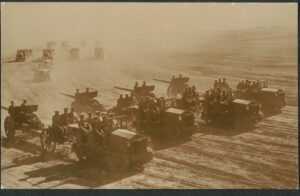
Based on the limitations that mentioned above for neorealism, Jack Snyder developed his own neoclassical realist theory. In his book, Myths of Empire, he described neoclassical realist frameworks through the concept of “overexpansion” (Snyder, 1991). According to the Snyder, states pathologically fall into the concept of overexpansion due to their certain domestic characteristics. According to the Snyder, states domestic structures are main deterministic forces in order to explain such same foreign policy activities (Snyder, 1991). In order to define it, Snyder took industrialisation as a zero point, however, this can be arguable, due to nature of the industrialisation and its progressive nature, in other words, every age has its own industrial period that based on the different interrelation between capital, land and labour. While putting importance on the domestic structure, Snyder also made important references to the cognitive perspective of the elites and their ideology through blowback and propaganda dynamics (Snyder, 1991). However, his ideological definitions are mostly restricted with the subjective text reconstructions, in other words, he mostly used the leaders speeches as a primary perspective while defining the cognitive dynamics, however, this can also arguable, because, recent researches show that, demographical changes, distribution of educational level, salaries, urbanisation etc. can be main causes of the ideological construction of the states, for example, Turchin brilliantly pointed out that, with the enlarging university degree from law, North became more and more anti-slavery tendencies, compared to the South before the US Civil War, this is very important to show that, how demographical dynamics affect ideology in direct or indirect ways (Turchin, 2016). He also divided types of politics and different levels of mythmaking which are the great examples for the explanations for the explanation of domestic structure. Only limitation for the Snyder’s approach to the neoclassical realism is the fact that, his methods restricted by the “curse of the words”, in other words, it can be said that the, across the typologies and deconstruction of the speeches, neoclassical realist theory can be also evaluated in terms of the demographic changes, analysis on state financials. In the second part, analysis of the 16th century world politics, I will try to add these demographic analyses into Snyder’s work, and show that, neoclassical realism can be applied to the any age or era and can have a universal validity in order to explain foreign policies of the state.
-
Early 16th Century Middle East Power Relations
During this period, we saw massive clashes and conflicts around the Mediterranean. However, author will consider only the one major conflict in this period: Ottoman-Safavid power relations. When we compare these states, Ottoman Empire was facing with the huge population expansion, due to its progressive conquests around the Balkans and the Crimea, and this population surplus accompanied with the risk of Malthusian trap and internal political pressure. As can be seen on the several rebellions against the Ottoman state, such as in the example of the Şahkulu in 1511 or Celali in 1519, alongside with the separate state demands, there was also rebels also had ideological conflicts with the Ottoman state, while Ottoman Empire pursued Sunni religious principles as a milestone for its ideology, rebels mostly encountered with the Kizilbash and Alevi ideologies, which both has clear connections with the Shiite ideology (Zarinebaf-Shahr, 1997). This ideological change only repressed through the crushing the rebels and also with another option; search and destroy tactics against the source of this ideology, which was the Safavids. When Ottomans find their mythmaking capacity endangered in the Anatolia, they started to pursue more hostile behaviour against the Safavid State. On the other hand, Safavid State quite contrary characteristics compared to the Ottoman State. First and most important difference was the while Ottoman State enlarged gradually, with the exception of the period of Mehmed II which was later fixed by Bayezid II through no-conquer policy, Safavid State rapidly conquer whole Iran and reached to the Turkestan under a very charismatic leader, Shah Ismail. Ismail built his state through concentrated interests of elites, he quickly eliminated every enemy of himself, even his father-in-law, and raised the banner of Shiite in order to establish much more focused elite group, which was based on the three groups; nomads, Shiite scholars and Iranian merchants. All of these groups, despite different origins and source of wealth, have one thing in common, spread into the Eastern Anatolia and Levant, in order to enrich the state, all of these groups believed that the Eastern Anatolia and Levant very crucial for their survival, from the perspective of the nomads, these lands were their possible lands of settlement, on the other hand, scholars believed that with the local population’s sympathy towards Shiite, they can be able to spread Shiite far more regions, and for the merchants, Levant and Eastern Anatolia encompassed with very rich trade routes, their combination with Persian Gulf Iran can be able to trade hub for their joint capital ventures. Ottoman Empire however, pursued more reluctant policy until the era of Selim I, due to its incapability to unify its elites under the same banner as Shah Ismail did, due to three important reasons; first of all, trade between Iran and Anatolia favoured by the Ottoman traders and Ottoman merchants were comfortable from their positions in this trade, they were the main beneficiaries of this trade and wanted to keep it on (Inalcik and Quataert, 1997). Secondly, Ottoman power politics already engaged with the France and Italian city states, which blinded political elites, Sultan and his divan, to what was happening in Iran and Eastern Anatolia (İnalcık and Quataert, 1997) (Fleet, 1999) (Fleet and Faroqhi, 2016). Thirdly, Ottoman State do not have any willingness to expand into eastern regions, their aim mostly focused on the Mediterranean region and the Central Europe (Fleet and Faroqhi, 2016).
In such atmosphere, Safavid elites stepped into first important mistake in terms of overexpansion. With the encouragement of the Sahkulu rebellion, they thought Ottoman state was weak enough against their power, they perceived Ottoman state’s power as a paper tiger image. Alongside with the vitality of interests in Eastern Anatolia and Levant, they also stepped into second overexpansion mistake, they believed that the with the support of the Shiite rebellions against the Ottoman state, they ignited the first phase of cumulative gains, fake image of the El Dorado for themselves, either economically, religiously or strategically. Moreover, their third mistake was their belief that the offensive advantage. Truly, Safavid powers mostly known with their immersive power on nomadic cavalry, which were mobile and active throughout the battle and master tacticians compared to their enemies. When Shah Ismail felt endangered by the Uzbek Sultan, his father-in-law who runs a Sunni state, he quickly gathered his forces and eliminated Uzbek state without even taking a breath. Safavid cavalry’s speed and power only comparable with their equivalent of Mameluke cavalry, from their childhood raised as a cavalryman (Floor, 2001). Last important mistake done by the Safavid State was its political elite cycles cognitive perspective. With the leadership of Shah Ismail, Safavid elites quickly organised and led to the very important victories, possession of Eastern Anatolian cities like Erzurum or Erzincan, vassalize the Khuzestan, Lorestan and Kurdistan regions, eliminated Muhammad Shaybani, his Kizilbash army enlarged and Kizilbash tribes ceased their internal fights with such concentrated leadership and started to making a ground for the Safavid troops for the invasion of Eastern Anatolian cities, such as Diyarbakir, however, this was also came with a price, Shah İsmail now seen as a Mahdi, a saviour, an invincible spiritual figure in the eyes of his followers, which had a very clear threat for himself; with every victory, he also renewed his invincibility but also shortened his state’s power and burdened the power of state, while at the beginning he intuitionalise the state through Shiite ideology, now he became the symbol (Fisher and Avery, 1986) (Savory, 1998) .
However, on the other side, Ottoman state was heavily reluctant against the Safavid threat, but after the Sahkulu rebellion, Ottoman state also started to mobilise its forces thanks to the Selim I. Selim acknowledged very important advantages that possessed by the Ottoman state. First of all, Ottoman army, was much more organised and released from all aspects of tribal system than the Safavid Army. Safavid Army was much more mobile, and dynamic compared to the Ottoman Army, however, main difference derived from the three elements. First of all, Ottoman Army was much more organised, through deepened infantry tactics and trainings which was seen as a profession, however, from the Safavids side, this was considered as a way of life (Erickson and Uyar, 2009). Secondly, Ottoman Army was released from every aspect of tribal relations. Army can be divided into two sections, Kapikulu which was the Sultan’s personal army contains janissaries and hassa brigades, and Sipahi’s armies, which were appointed by the Sultan and collecting taxes and soldiers on behalf of the Sultan. However, Kizilbash Army was not able establish such division of labour and managerial influence over their armies and led their armies run by the Kizilbash officers who were selected by their tribes. Last and most important difference was the use of technology. Ottoman Army, different from every other army in the Middle East, started to use muskets and mobile cannons and constantly drilling with such technologies in order to adapt them into their military organisation (Agoston, 2005). While on the other hand, Safavid Army does not contain any kind of musket or cannons, actually muskets and cannons will be used in the armies of the Safavid State during the period of Shah Abbas nearly a century later. On the other hand, based on the Gabor Agostan’s search on Ottoman military power and the İnalcık’s works on the Ottoman textile industry, one can clearly say that the Ottoman State entered into its own industrial phase long before the Safavid State, this occurred due to certain advantage possessed by the Ottoman state, contrary to the Safavid state, Ottoman state’s ideology and institutionalisation is far more organised and its state-establishment process went more smooth than the Safavid state (İnalcık and Quataert, 1997) (Agoston, 2005). Safavid state, however, established its own state structure through a charismatic spiritual leader with extreme state ideology, Kizilbash doctrine.
Based on the information above, Selim I gradually encircle the Safavid state. First of all, he started to boycott Iranian silk in the Ottoman state and replaced it with the Mameluke state’s silk (İnalcık and Quataert, 1997). Secondly, he reconciled with the Babur state, in order to encircle the Safavid state and exported cannon and muskets to the Babur state (Farooqi, 2008). He also reorganised the eastern borders and cities as well, through conducting a search and destroy activity against the Kizilbashs over the Anatolia and strengthened the border of the state in order to maintain silk boycott. By doing so, he forced Safavid state into the much more awkward position against the Ottoman state. Eventually, war between Safavid state and the Ottoman state took place in the Çaldiran, ended up with the decisive Ottoman victory, thanks to advanced technology possessed by the Ottoman army through muskets and mobile cannons. With the end of the war, Safavid state entirely cut off from the rest of the world, alongside with the huge devastation of the invincible symbol of Shah İsmail, that led to dissolution of the Kizilbash tribes which consequence with the civil war inside the Safavid state. Safavid state case was the one of most important examples of the how overexpansion ambitions failed up so quickly and how hard the restoration can be achieved from such devastating consequences. Until the rule of Shah Abbas, Safavid state remained weak and lack of central authority that run by its own small military cartel and isolated from the rest of the world.
BIBLIOGRAPHY
Naimur Rahman Farooqi, Mughal-Ottoman Relations: A Study of Political & Diplomatic Relations Between Mughal India and the Ottoman Empire, 1556-1748, İdarah-i Adabiyat-i Delli Vol. 32, 1989.
Willem Floor, Safavid Government Institutions. Costa Mesa, California: Mazda Publishers, 2001.
Gabor Agoston, Guns for the Sultan: Military Power and the Weapons Industry in the Ottoman Empire. Cambridge: Cambridge University Press, 2005.
Mesut Uyar and Edward J. Erickson, A Military History of the Ottomans: From Osman to Atatürk, Pleager Security International, 2009.
Sureyya Faroqhi and Kate Fleet, The Cambridge History of Turkey Volume 2: The Ottoman Empire as a World Power, 1453-1603, Cambridge University Press, 2013.
Halil İnalcık and Donald Quataert, An Economic and Social History of the Ottoman Empire vol. 1: 1300-1600, Cambridge University Press, 1997.
William Bayne Fisher and P. Avery, The Cambridge History of Iran. Vol. 6, Cambridge University Press, 1986.
Roger Savory, Esma’il I Safawi, Encyclopaedia Iranica, Vol. VIII, Fasc. 6. pp. 628–636, 1998.
Martin Sicker, The Islamic World in Ascendancy: From the Arab Conquests to the Siege of Vienna. Greenwood Publishing Group, 2000.
Fariba Zarinebaf-Shahr, “Qızılbash “Heresy” and Rebellion in Ottoman Anatolia During the Sixteenth Century”. Anatolia Moderna. Yeni Anadolu. 7 (1): 1–15, 1997.
Jack L. Snyder, Myths of Empire: Domestic Politics and International Ambition, Cornell University Press, 1991.
Peter Turchin, Ages of Discord: A Structural-Demographic Analysis of American History, Beresta Books, 2016.
Thucydides, The Peloponnesian War, Oxford University Press, 2009.
[/vc_toggle]

